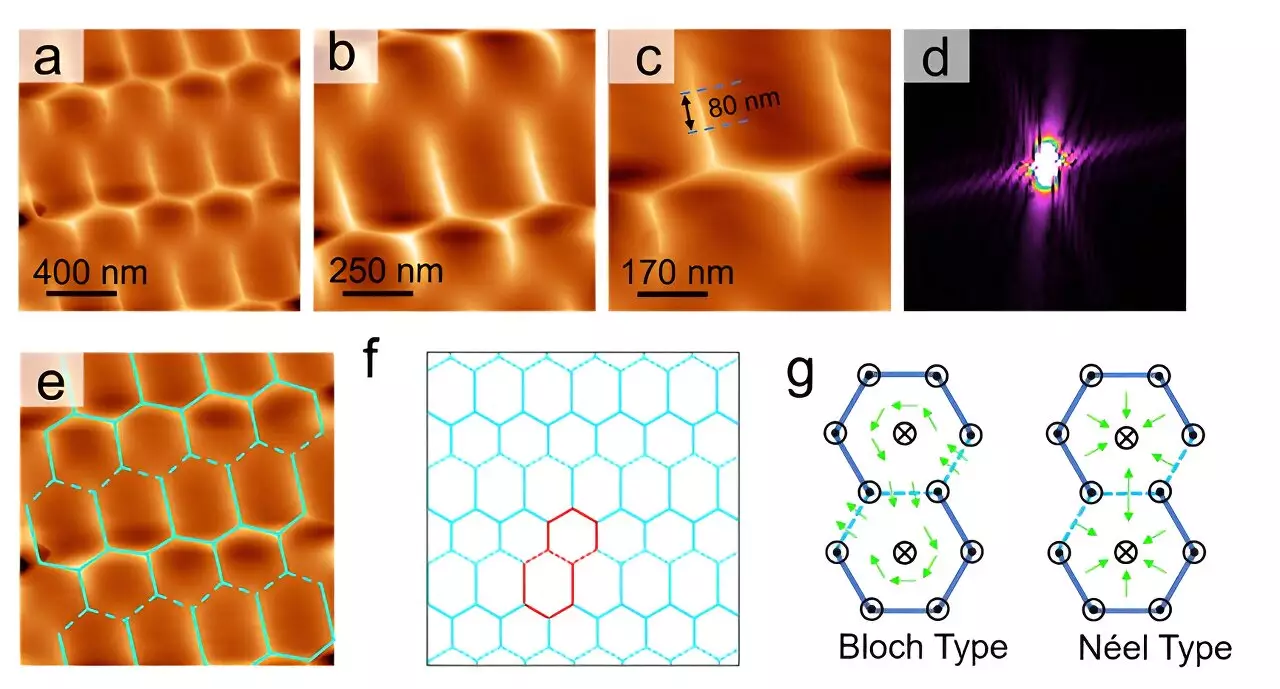Recent advancements in materials science have shed light on the complexities of intrinsic magnetic structures, particularly within kagome lattices. A collaborative research initiative from China has successfully utilized sophisticated techniques such as magnetic force microscopy (MFM), electron paramagnetic resonance spectroscopy, and micromagnetic simulations. This endeavor culminated in the groundbreaking observation of these magnetic structures, which has major implications for quantum computing and high-temperature superconductivity.
Kagome lattices have piqued the interest of physicists due to their unique characteristics, including Dirac points and flat bands. These features enable significant experimental phenomena, such as topological magnetism and unconventional superconductivity. Despite the potential applications, the intrinsic spin behaviors that underlie these phenomena remain largely unexplored. The study, which was published in Advanced Science on August 19, unfolds new dimensions in this intriguing domain.
Charged with leadership by Prof. Lu Qingyou from the Hefei Institutes of Physical Science, this research team worked closely with Prof. Xiong Yimin at Anhui University. The collaborative effort unveiled a new lattice-modulated magnetic configuration within the binary kagome structure of Fe3Sn2 single crystals. This newly observed magnetic array features a distinctive broken hexagonal structure, resulting from the balancing act between the hexagonal symmetry of the lattice and the uniaxial magnetic anisotropy present in the material.
The presence of these intricate spin configurations was further validated through Hall transport measurements, which provided additional clarity on the topologically broken states initiating magnetic interactions within the material. The complexity of these interactions is crucial for understanding future advancements in magnetic technologies.
The research team employed variable-temperature experiments to probe the magnetic dynamics exhibited by Fe3Sn2 single crystals. Their findings indicated that the magnetic reconstruction transpired through a second-order phase transition or a weak first-order transition, challenging prior assumptions that only considered a first-order transition scenario. This discovery is particularly significant as it reconstructs the understanding of the low-temperature magnetic ground state from a previously suggested spin-glass state to a robust in-plane ferromagnetic state.
To synthesize their findings, the researchers introduced a comprehensive magnetic phase diagram for Fe3Sn2, enriching the theoretical framework guiding future experiments.
Implications for Quantum Technologies
Moreover, detailed quantitative MFM data revealed that considerable out-of-plane magnetic components remain intact even at low temperatures. This pivotal insight allowed the team to apply the Kane-Mele model, elucidating the opening of the Dirac gap under low-temperature regimes—effectively refuting earlier hypotheses regarding skyrmions under such conditions.
The groundbreaking nature of this research opens new avenues for the exploration of topological magnetic structures and their potential applications in quantum computing technologies. As understanding deepens within the field of condensed matter physics, these developments not only illuminate the mysteries of kagome lattices but also pave the way for transformative technological advancements in superconductivity and related realms.

